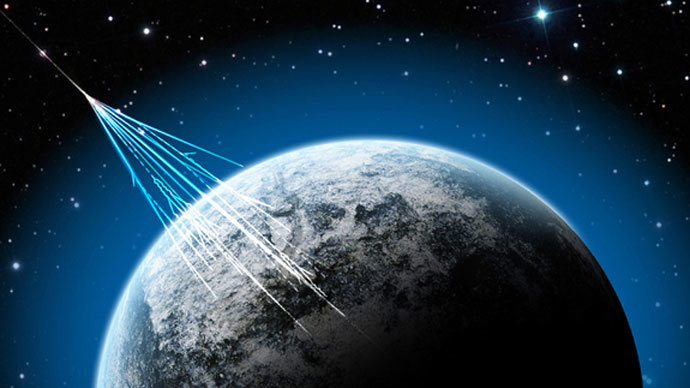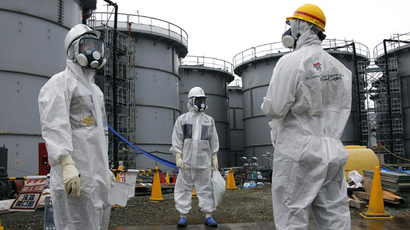Promising the muon: Scientists to map Fukushima nuclear hotspots with cosmic radiation

Japanese scientists say they have successfully completed a pilot program that allows them to use cosmic rays to determine the location of nuclear fuel inside the damaged Fukushima nuclear plant.
“The technology enables you to find where nuclear fuel is
anywhere in the world," Fumihiko Takasaki, a researcher at
the High Energy Accelerator Research Organisation (KEK), told AFP
news agency.
The experiment - using a technique known as muon scattering
radiography - had been running at a disused nuclear plant in
Ibaraki between from February 2012 until last month.
Tiny, high-energy particles called muons are beamed down from
space and pass through most materials, including human bones,
concrete, and water. They form a consistent stream, with about
1000 moving through one square foot of air on Earth every minute.
While some substances only slightly alter their path, a few block
them altogether – particularly the uranium and plutonium used as
nuclear fuel. The deflections as a result of these encounters are
specific, consistent, and well known to scientists.
By measuring them, they can see an outline of substances impeding
the muons, and create a three-dimensional map.

Muon scattering radiography has existed since the 1960s. It has been used to map the insides of volcanoes, to examine if there are tunnels underneath ancient pyramids, and to scan cargo for potential nuclear contraband.
But there was never a need to develop a detector to clean up a nuclear site - until the Fukushima plant was devastated by the devastating tsunami and earthquake on the eastern coast of Japan in March 2011.
With much of the plant covered in debris or submerged under
water, it is difficult and dangerous to enter and find out
exactly where the deformed remains of the melted down reactors
remain.
At the same time, fuel from them keeps mixing with groundwater,
creating a constant leak of radioactive water that plant operator
TEPCO is struggling to contain.
With the clean-up bill already in excess of US$30 billion - with
$50 billion more expected to be spent on pollution removal, and
another $15 billion on decommissioning the reactors - TEPCO
invested in studying the possibility of using muon scattering
radiography two years ago.

Scientists from KEK joined with the University of Tokyo, University of Tsukuba, Tokyo Metropolitan University, and some American colleagues to create a functioning detector.
Takasaki has said that just five detectors placed around the stricken plant for two months could create an accurate representation of where its most radioactive and dangerous elements are located.
However, he claims that TEPCO has not yet officially confirmed that it will use the technology it is being offered.














